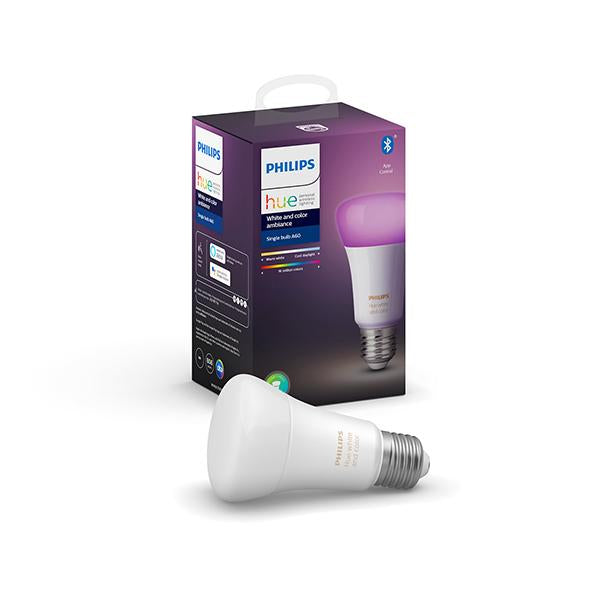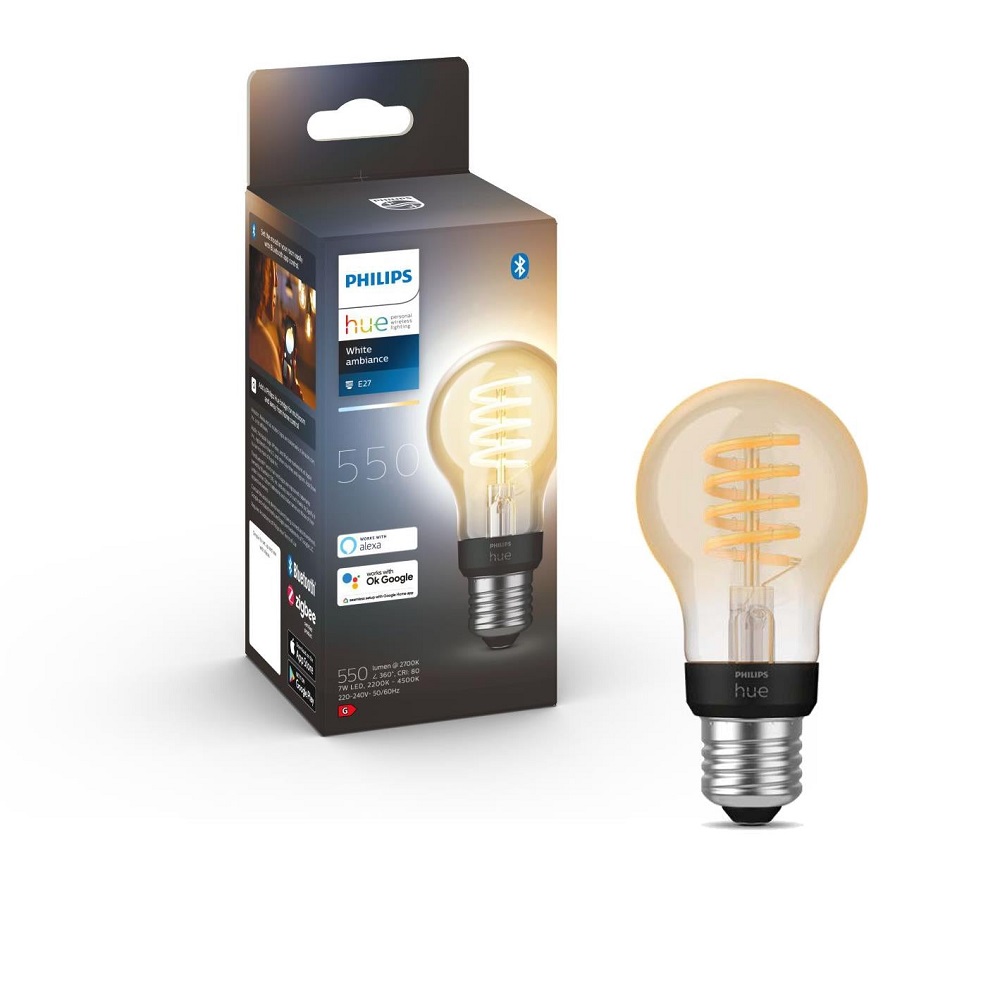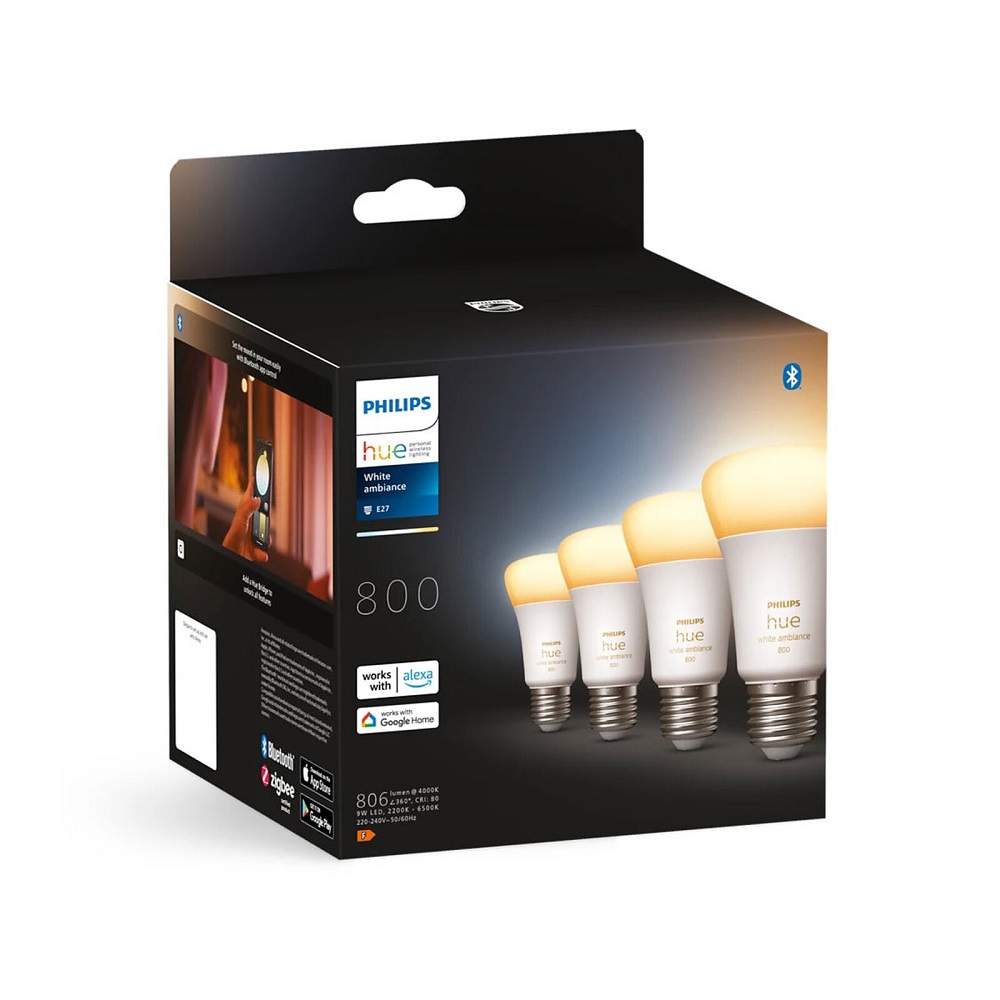Introduction to Philips Smart Bulbs
Philips smart bulbs represent the next level in home lighting technology. These devices do more than just light up a room. They give you control over the intensity, color, and timing of your lights. With Philips smart bulb, you can customize your home’s ambiance with the touch of a button or a simple voice command.
What Are Smart Bulbs?
Smart bulbs are LED light bulbs that you can control using a smartphone, tablet, or smart home system. Unlike traditional bulbs, they connect to your home network. This allows you to adjust them remotely. You can switch them on or off, change the bulb’s color, and set schedules, all without touching the light switch.
Philips smart bulbs take this a step further by offering advanced features such as geofencing and compatibility with various smart home platforms. The result is a more connected, more energy-efficient home, with lighting that adapts to your lifestyle.
Why Choose Philips?
When deciding on smart bulbs, you might wonder why Philips stands out. Philips smart bulbs are known for quality and innovation. They offer a robust build and long-lasting performance. With a focus on user experience, they are easy to install and integrate with your existing home tech. Philips also provides a variety of options, ensuring there is a smart bulb for every need and budget. Whether it’s the rich features of the Philips Hue series or the practicality of Philips WiZ Connected, Philips has you covered.

How Philips Smart Bulbs Work
Understanding how Philips smart bulb work is crucial to utilizing their full potential. These smart bulbs connect to your home network via Wi-Fi or a bridge, allowing you to manage your lighting from anywhere.
Connectivity and Control
Philips smart bulbs connect to your home Wi-Fi network or require a Philips bridge to operate. Once connected, you have full control through the Philips Hue app. You can switch lights on or off, adjust brightness, or change colors using your smartphone. The app also lets you group bulbs for room-by-room control.
Integration with virtual assistants means voice control is possible. You can use commands like ‘turn on the living room light’ or ‘dim the bedroom lamps’ for hands-free operation.
Compatibility with Smart Home Systems
Compatibility with smart home systems is a key feature of Philips smart bulb. They work with major platforms like Google Home, Amazon Alexa, Apple HomeKit, and more. This allows for seamless integration with your existing devices.
With this integration, you can create routines that include your lights. For example, you can set a ‘Good Morning’ routine that gradually increases light intensity to wake you up gently. Philips smart bulbs’ flexibility ensures they fit into any smart home setup.
Benefits of Using Philips Smart Bulbs
Philips smart bulb bring numerous advantages to your home lighting solutions. These benefits range from reducing your energy consumption to enhancing your living environment with customizable features.
Energy Efficiency
Philips smart bulbs are designed for energy conservation. Using LED technology, they consume less power compared to traditional bulbs. This results in significant reductions in your electricity bills. By switching to these energy-efficient bulbs, you also contribute to environmental conservation.
Customizable Lighting Options
One of the standout features of Philips smart bulb is their versatility in customization. You can alter the color, brightness, and timing of the lights to match your mood or activity. Whether you need bright light for reading or soft hues for a relaxing evening, these bulbs adjust to your preferences. Additionally, using the Philips Hue app, you can create scenes and routines that automatically adjust your lighting based on the time of day or your activities.

Different Models of Philips Smart Bulbs
Philips offers a variety of smart bulbs to suit different needs.
Philips Hue Series
The Philips Hue series is known for its rich features. These bulbs offer color and temperature adjustments. They are ideal for those who wish to create specific moods or atmospheres in their homes. The Hue series connects easily with most smart home systems. Users can control these from the Philips Hue app or via voice commands. They support scenes and routines, enhancing the automated experience. This makes them perfect for tech-savvy users who enjoy personalized settings.
Philips WiZ Connected
Philips WiZ Connected bulbs are practical and budget-friendly. They connect directly to your Wi-Fi network without needing a bridge. This ease of setup makes them a good option for beginners. WiZ Connected bulbs also support app and voice controls. They offer standard scheduling features, making them suitable for everyday use. These bulbs cater to users seeking straightforward, smart lighting solutions without complex features.
Setting Up Your Philips Smart Bulbs
Setting up your Philips smart bulbs is straightforward and user-friendly. Follow these simple steps to get your smart lighting system up and running quickly.
Installation Process
Before you start, ensure you have the Philips Hue app downloaded on your smartphone or tablet. Unscrew your old light bulbs and replace them with your Philips smart bulbs. They fit into your existing light fixtures just like any standard bulb. Next, power your lights and make sure they are switched on. Once installed, proceed to the app to add your new bulbs.
The app will guide you through detecting and adding your Philips smart bulbs to the system. It provides easy-to-follow instructions, making the process hassle-free even for those who are new to smart home technology.
Connecting to Your Network
To control your Philips smart bulbs remotely, they need to be connected to your Wi-Fi network. If you’re using Philips Hue, you will need the Philips bridge. Plug in the bridge and connect it to your router using the supplied cable. Open the Hue app and it will automatically search for the bridge. Once found, you can select your new bulbs and add them to your network.
With Philips WiZ Connected bulbs, you can skip the bridge and connect them directly to your Wi-Fi. Simply go to the WiZ app, find your bulbs, and connect them by following the prompts. A stable Wi-Fi connection ensures that you’ll be able to control your lights from anywhere, at any time.
After your Philips smart bulbs are properly set up, you can enjoy full control over your home lighting. Customize settings, adjust colors, and create the perfect ambiance with ease using your smart device.

Advanced Features of Philips Smart Bulbs
Philips smart bulbs are not only about basic lighting. They come with advanced features that enhance user convenience and flexibility. These features contribute significantly to creating a smarter, more interactive home environment. Below, we explore two of the most notable advanced features: Voice Control Integration and Scheduling and Automation.
Voice Control Integration
Voice control is a standout feature of Philips smart bulbs. Owners can manage their home lighting with simple voice commands. Integration with popular voice assistants like Amazon Alexa, Google Assistant, and Apple Siri is seamless. You can say commands like, ‘Alexa, dim the living room lights,’ or ‘Hey Google, turn on the kitchen lights.’ This hands-free operation is perfect for when you are busy or if the switch is too far away.
Scheduling and Automation
Philips smart bulbs go beyond manual control with their scheduling and automation capabilities. Users can set schedules for lights to turn on or off at specific times. For instance, you might want lights to gradually brighten in the morning. This simulates a sunrise, helping you wake up naturally.
Or, you can automate the lighting based on various conditions. For example, you can program the bulbs to switch on as soon as you arrive home, thanks to geofencing technology. Such automation ensures you never have to return to a dark house. It also helps in saving energy by turning off lights when they are not needed, thus contributing to lower utility bills and environmental conservation.
Troubleshooting Common Issues
As much as Philips smart bulbs are designed to provide a smooth and intuitive user experience, occasional glitches may occur. When they do, knowing how to troubleshoot common issues will help you get your smart lighting back on track.
Connectivity Problems
Connectivity issues are among the most common problems users face with smart bulbs. If your Philips smart bulbs are not responding or you’re unable to control them through the app or voice commands, try these steps:
- Check your Wi-Fi network to ensure it’s stable and functioning. A simple router restart can sometimes solve the problem.
- Make sure your Philips smart bulbs are within the range of your Wi-Fi network or Philips bridge.
- If using a bridge, verify that it’s properly connected to your router and that its lights are on.
- Restart your Philips smart bulbs by switching them off and on using the physical light switch.
- Remove and re-add your smart bulbs in the Philips Hue or WiZ app. This can refresh the connection.
If these steps don’t resolve the issue, consult the app’s help section or Philips customer support.
Firmware Updates
Keeping your Philips smart bulb updated with the latest firmware is essential for optimal performance and security. Firmware updates often include fixes for known issues and can improve connectivity. To update your bulbs:
- Ensure your Philips smart bulbs are powered on.
- Open the Philips Hue or WiZ app and navigate to the settings or update section.
- Follow the instructions in the app to check for and install any available updates.
By staying up to date with firmware updates, you reduce the likelihood of facing connectivity issues and enjoy the latest features and improvements for your Philips smart bulb.